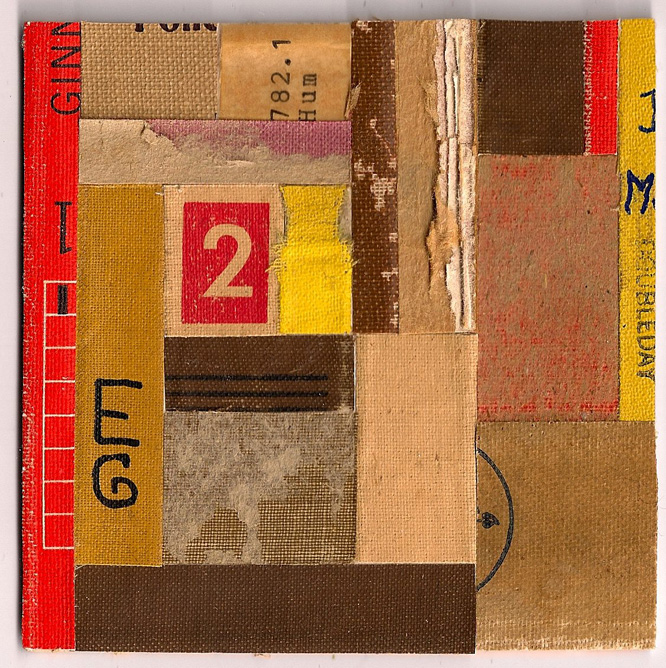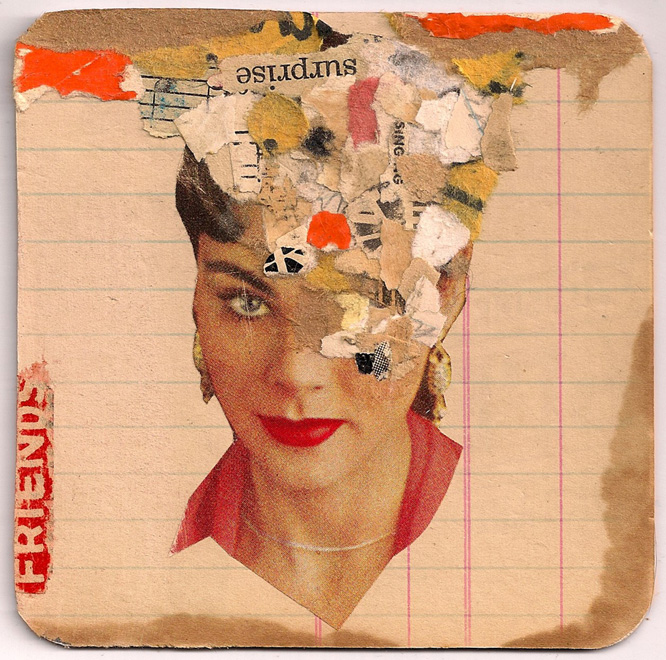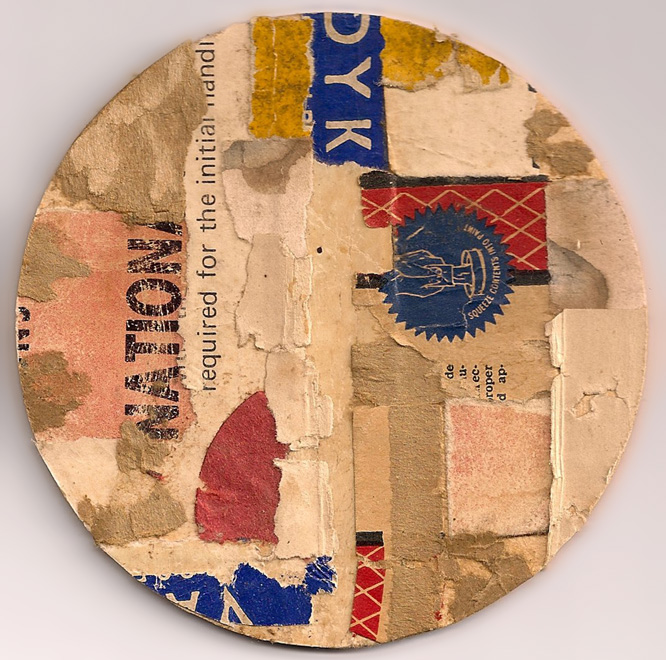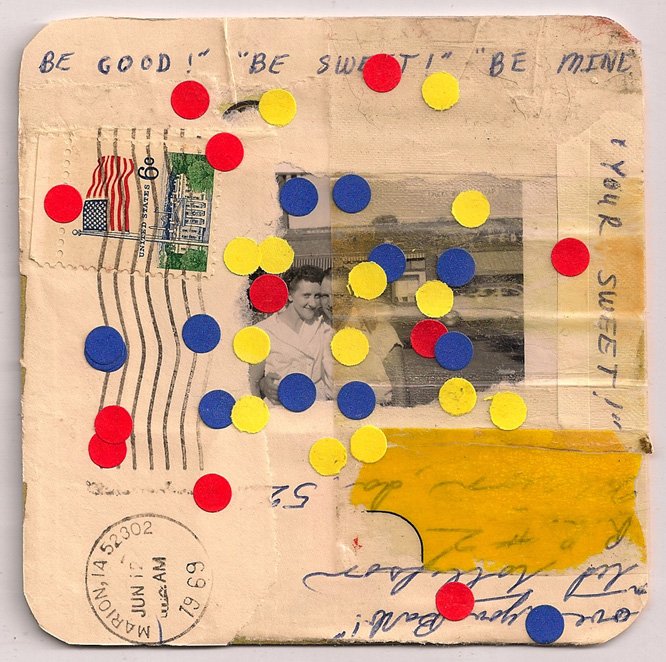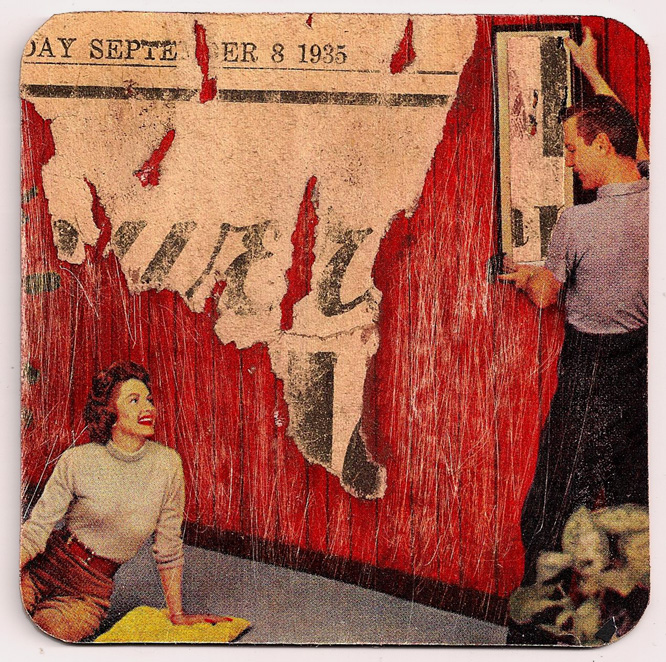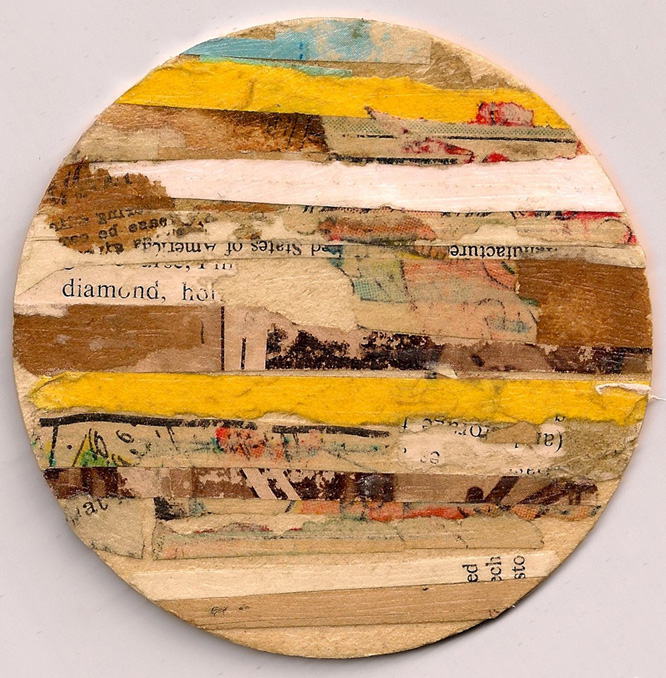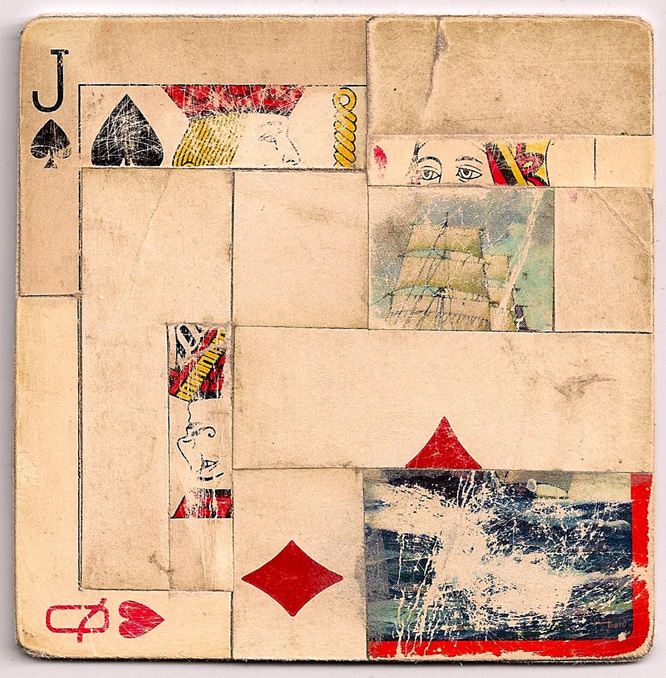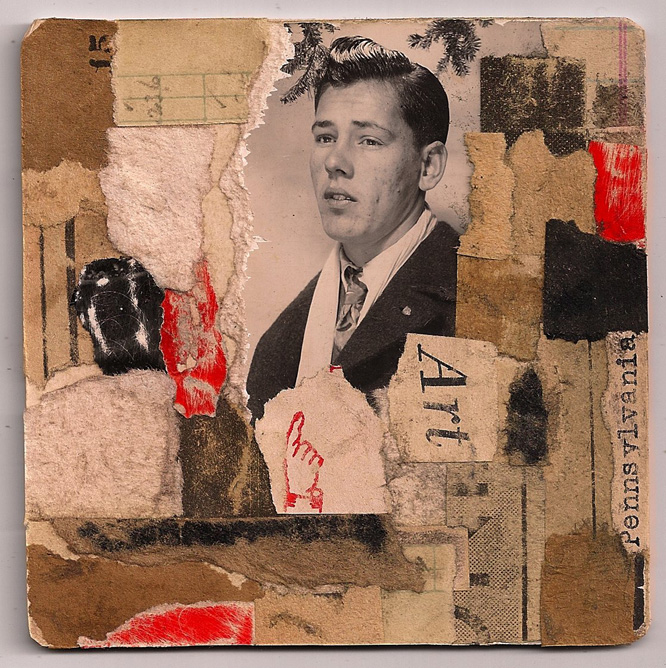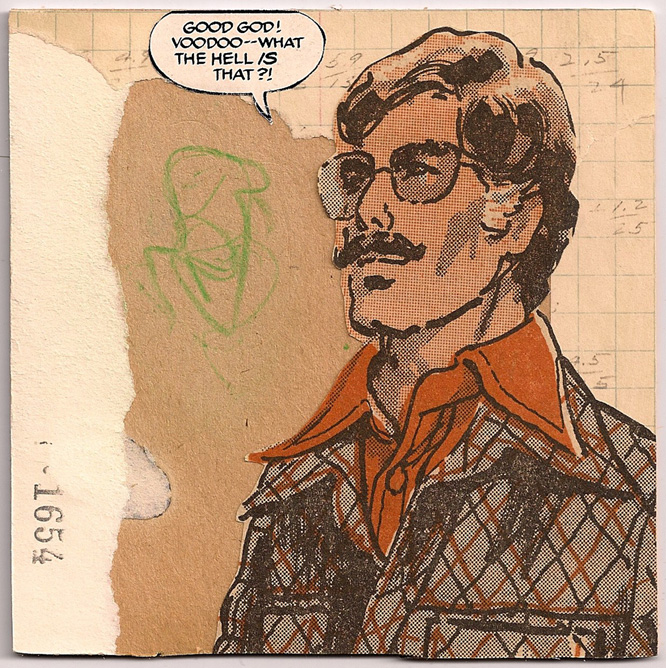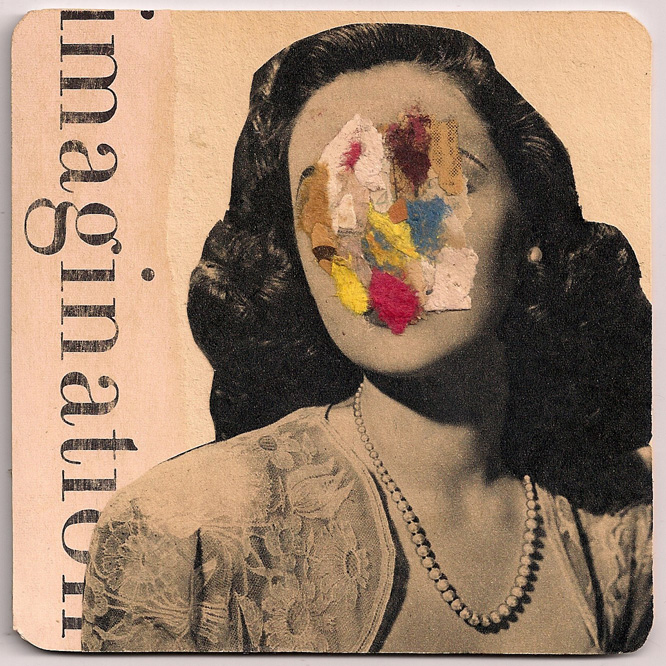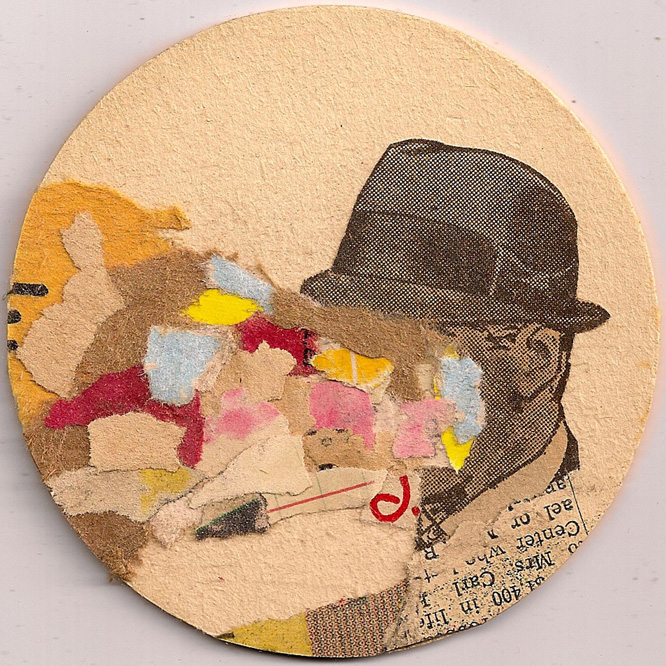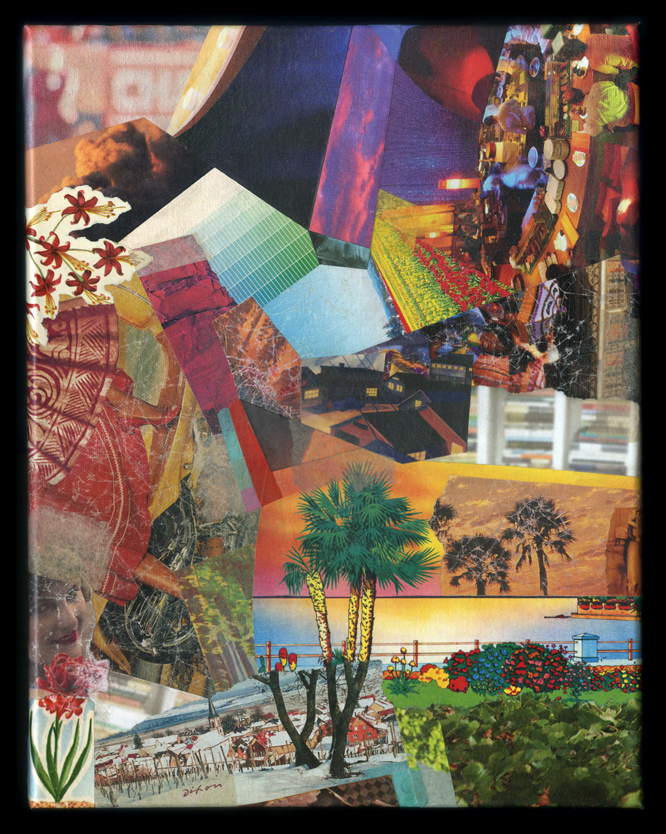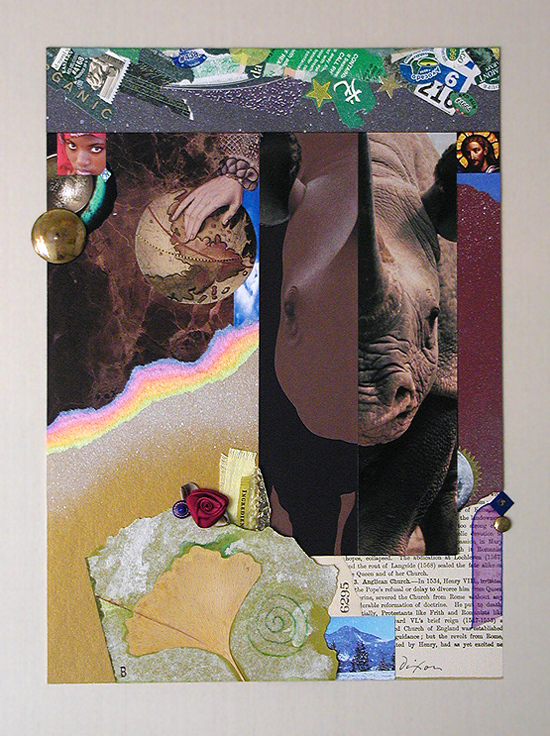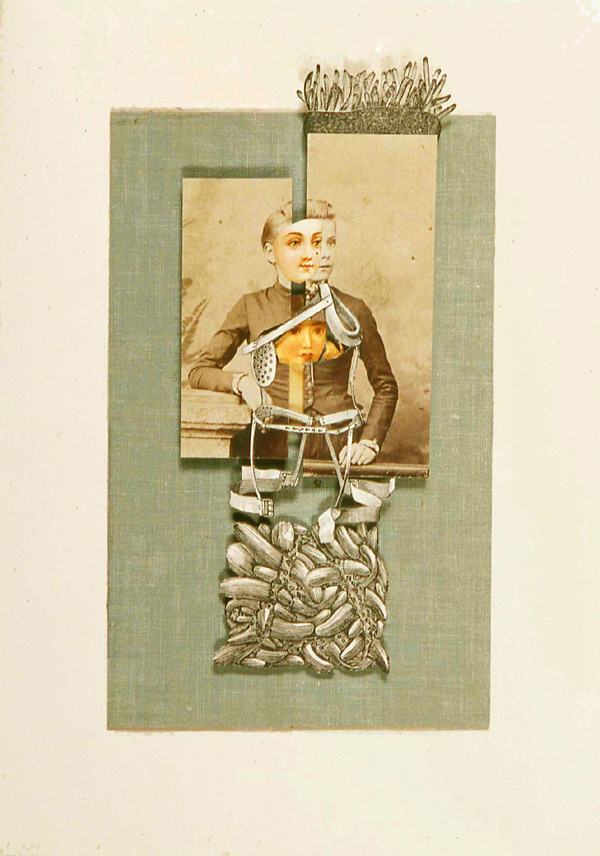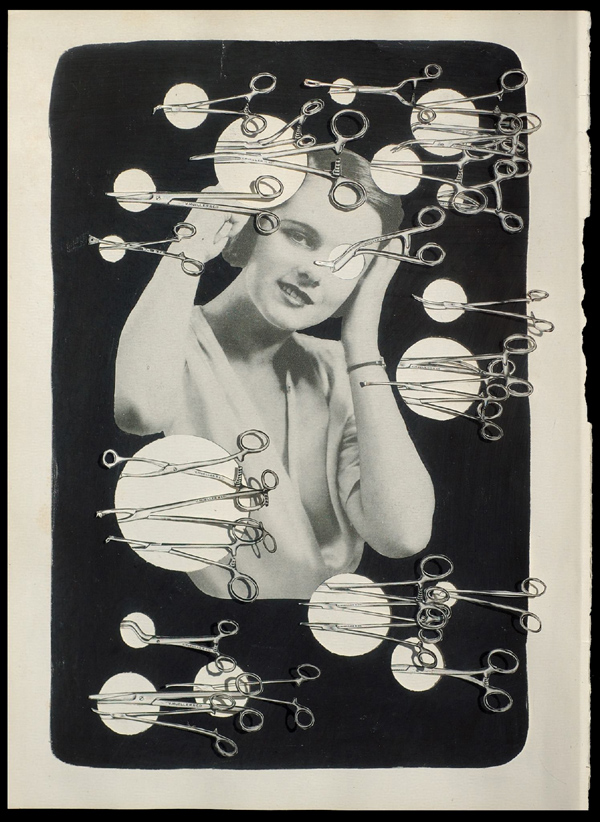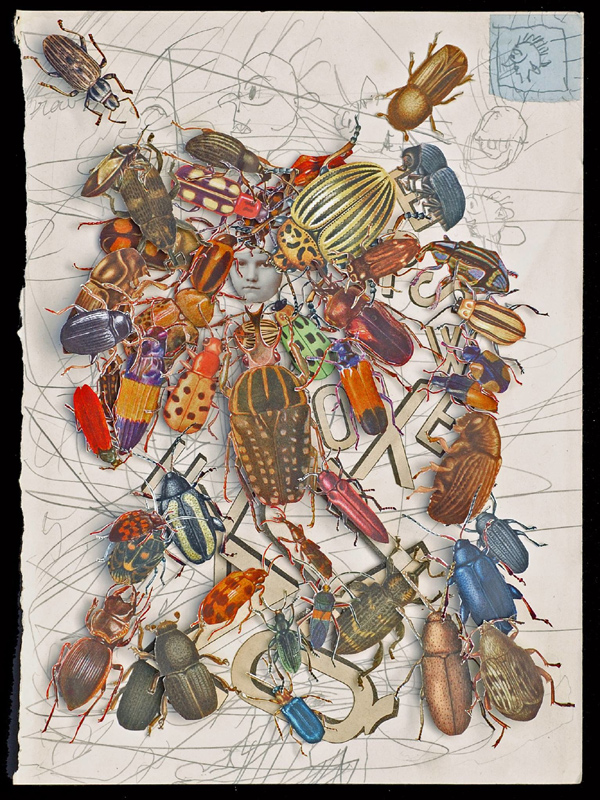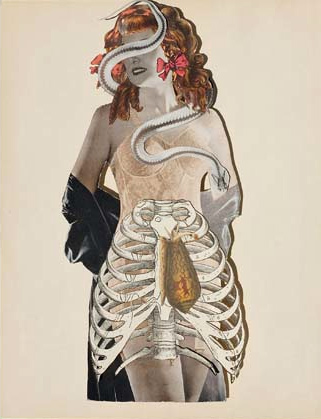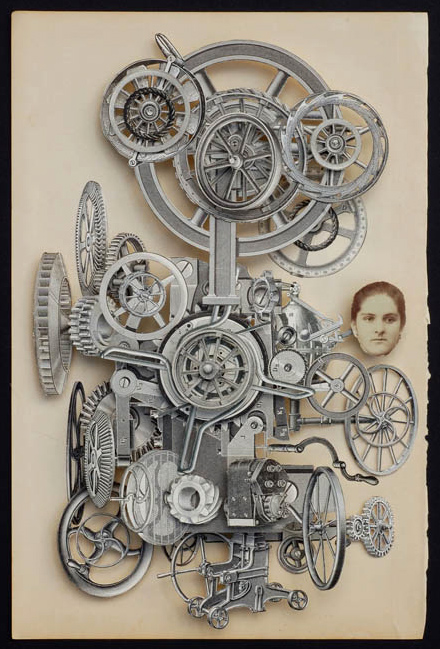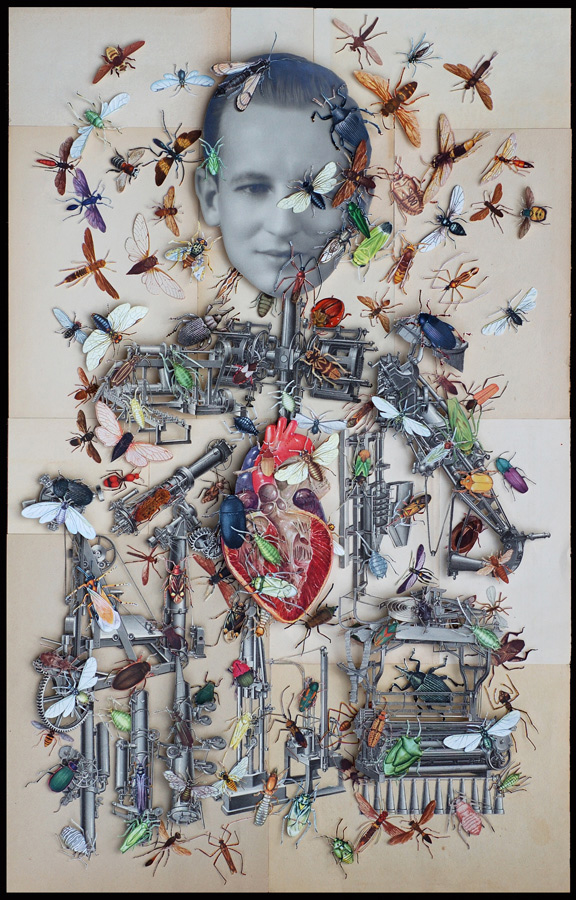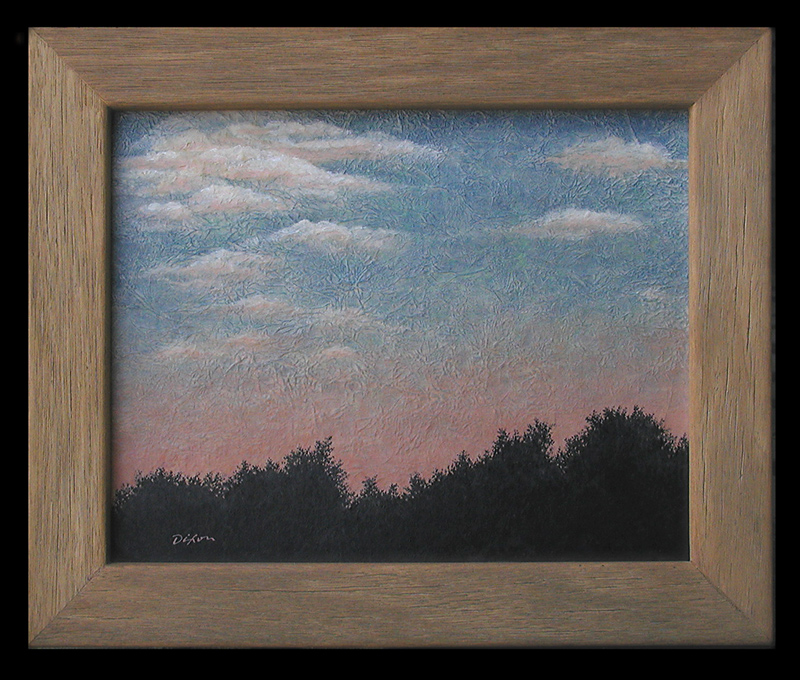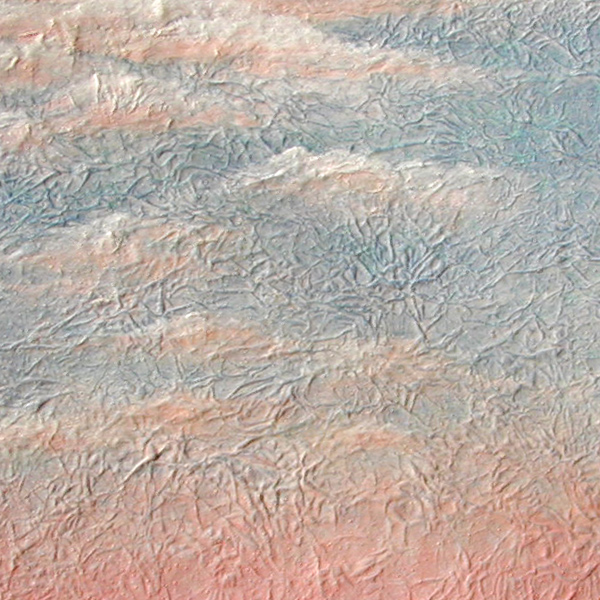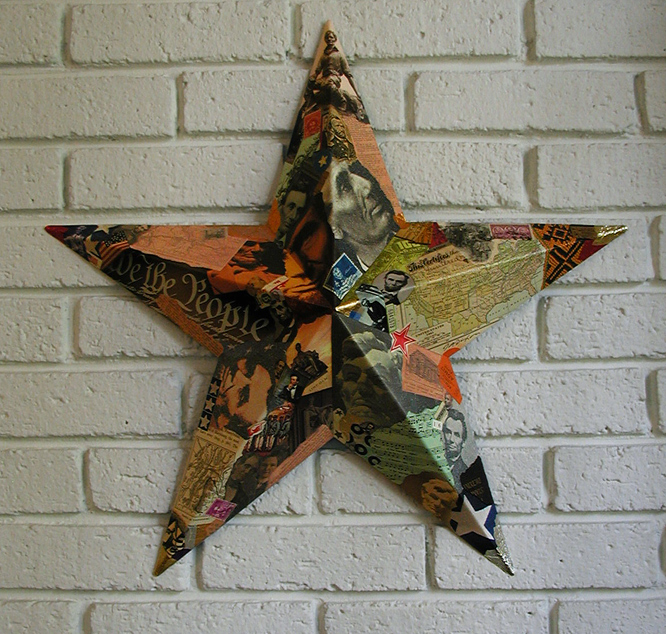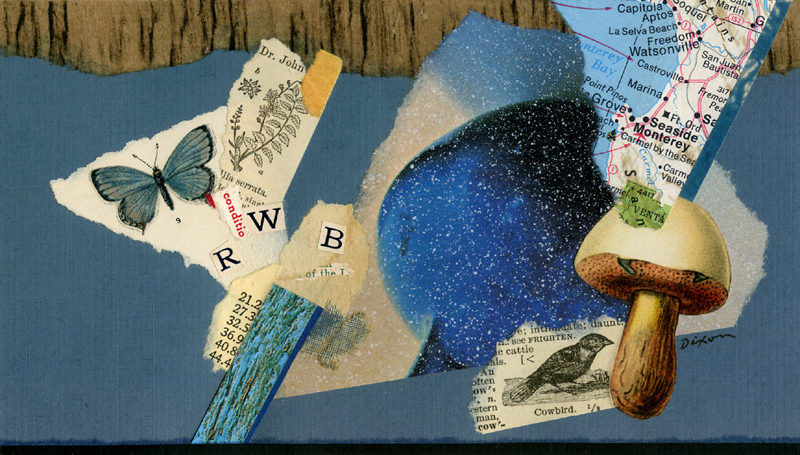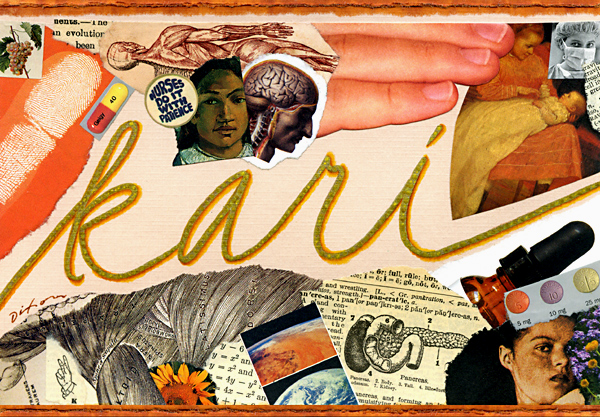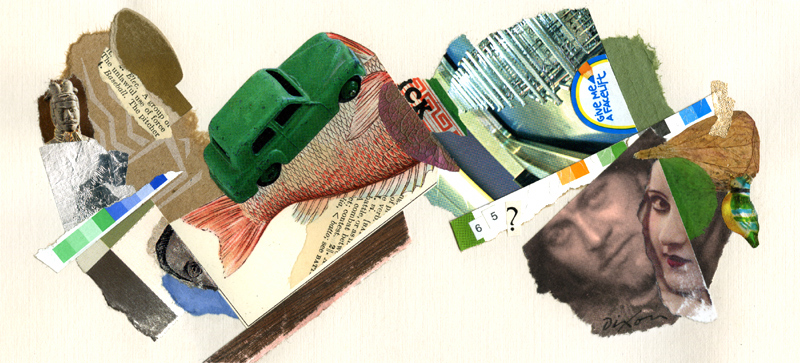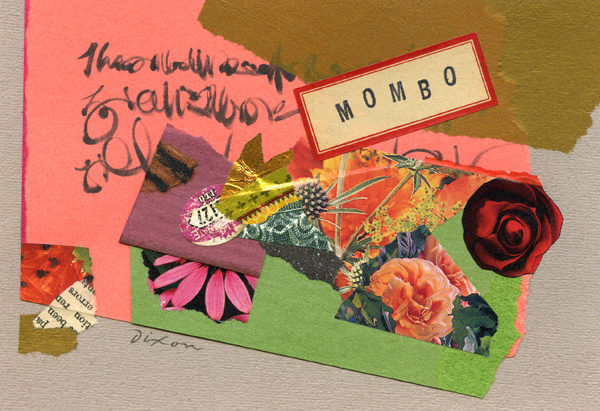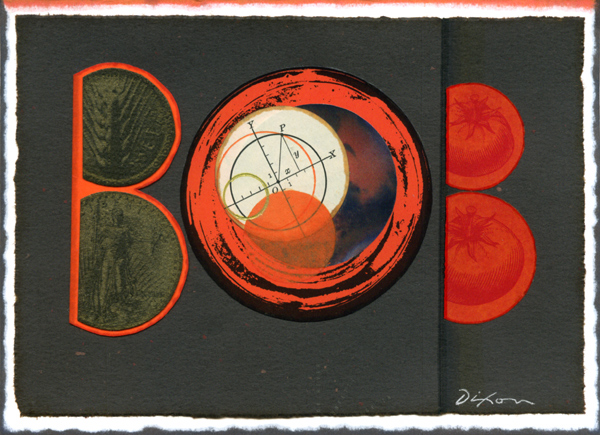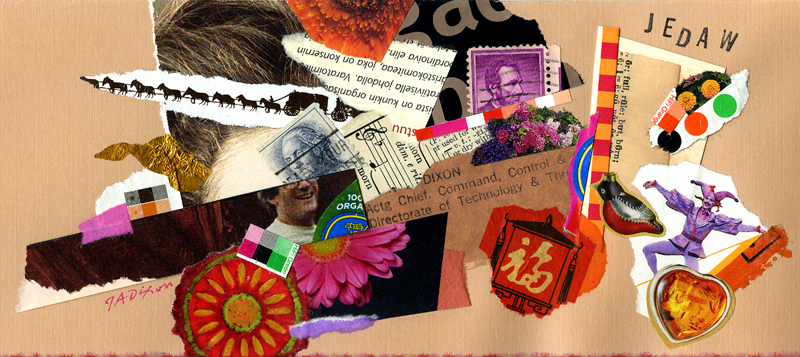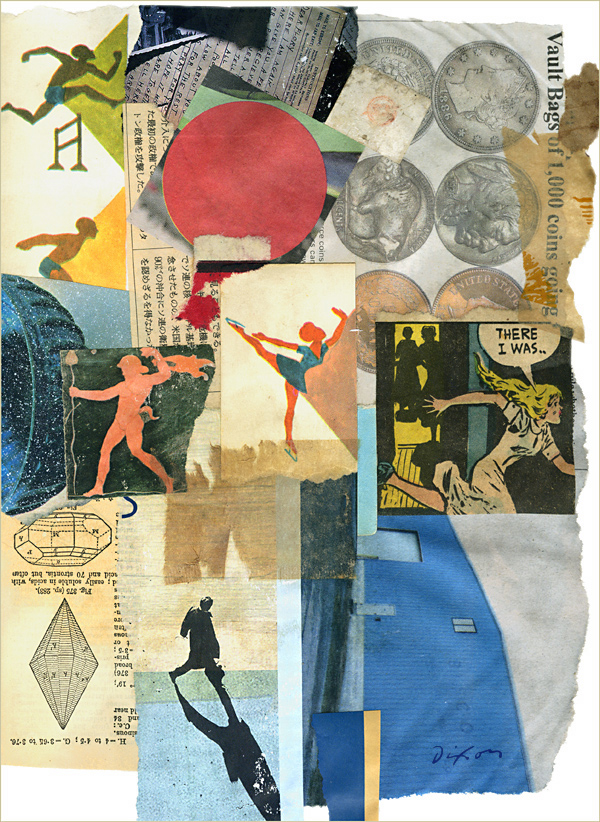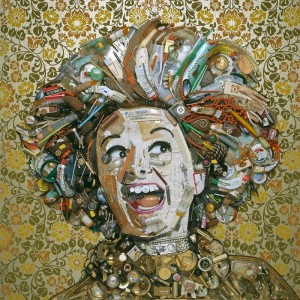“To alcohol: the cause of, and solution to, all of life’s problems.”
— Homer Simpson
Yesterday was my birthday, and I was rocked by the generosity of a fellow practitioner, Ted Tollefson. A veteran collaborator, he is also one of the more versatile individuals currently laboring in the medium. Like many collage artists, Tollefson explores a number of different approaches, but has recently established his mastery of the collage-on-beer-coaster format.
I was not fully aware until today that he has been producing a coaster-based collage for each of his facebook friends. That means hundreds of miniatures in a relatively short time frame, and, from what I can tell, he calibrates the visual method for each intended recipient. Given my expressed fondness for personal miniatures, TT is a kindred spirit indeed. He has crafted a real gem for my gift coaster. Everything about it — scale, colors, composition, textures, choice of ingredients — are simply outstanding. Thank you, sir, for your kindness. Keep up the superb effort. You are a true heir to Kurt Schwitters. Merz lives!
Take a look at just a few examples of his creative output and you might share my high regard for this mushrooming body of intriguing work.
April 29
collage on beer coaster
by T Tollefson for J A Dixon
Personal miniatures on beer coasters by Ted Tollefson.
(Hover over image for more information; click to view larger.)
